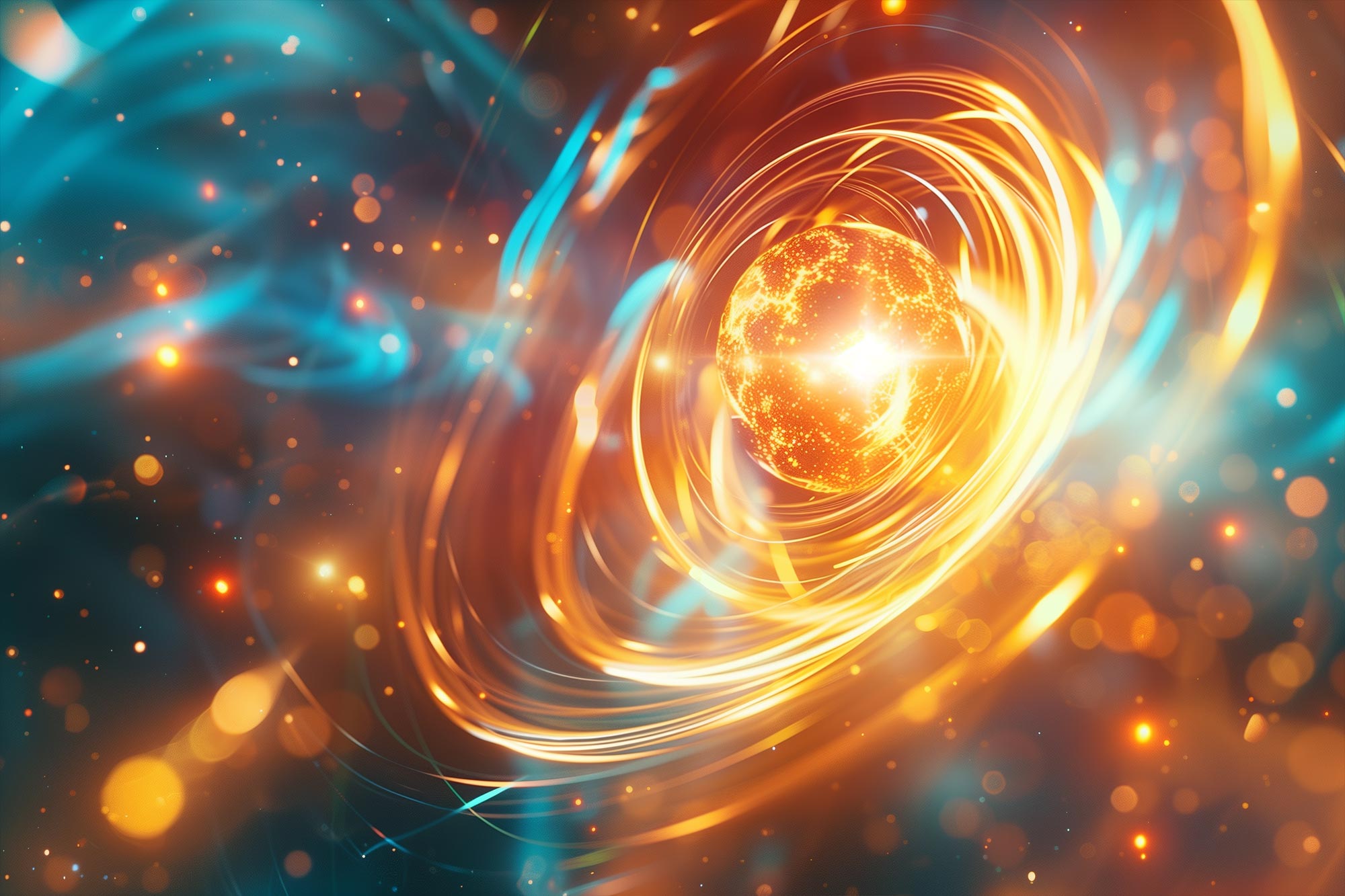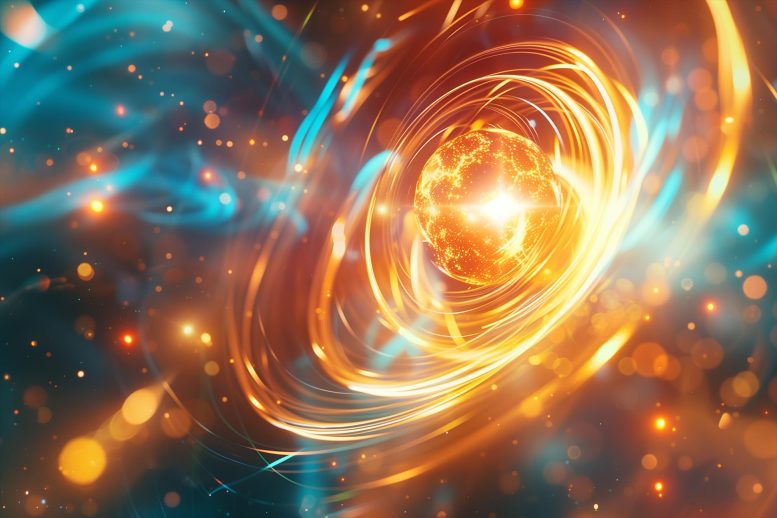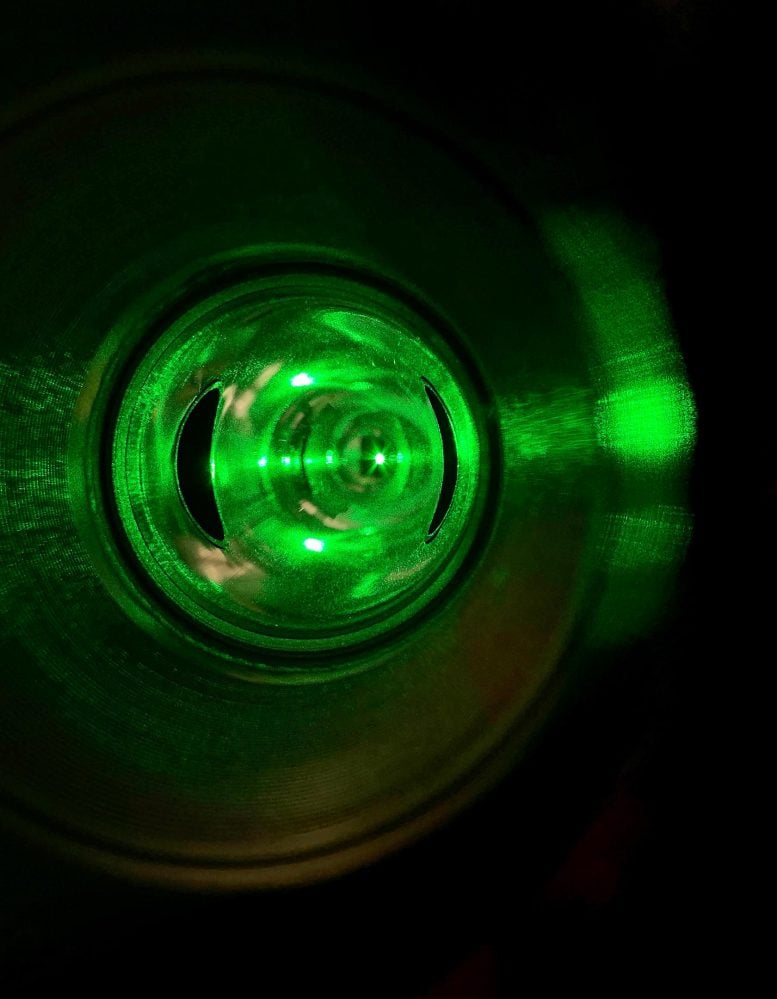

Nuclear physicists have achieved a groundbreaking measurement in electron beam polarization using a Compton polarimeter, drastically reducing uncertainty in electron spin to just 0.36%.
This advance not only surpasses previous records but also meets the precision required for upcoming experiments intended to test and potentially expand the Standard Model of particle physics. These experiments aim to explore fundamental constituents of matter and the forces that interact between them, promising to refine our understanding of the universe’s fabric.
Electron Spin and Polarization
Spin, like mass or electric charge, is a fundamental property inherent to electrons. When electrons spin in the same direction at a given time, this is referred to as polarization. Knowledge of that parallel spin is vital for scientists probing the nature of matter on the tiniest scales. In particular, it sheds light on the structure of nuclei of heavy atoms such as lead.
Now, nuclear physicists have measured the polarization of an electron beam more precisely than ever before. They achieved the record measurement by sending laser light and electrons on a collision course and detecting the photons, or particles of light, that bounce off. This interaction is known as the Compton effect.

Advancing the Standard Model
The Standard Model of particle physics attempts to describe the most basic constituents of atoms, such as quarks and gluons, along with three of the four fundamental forces: the strong force, the weak force, and the electromagnetic force. But it isn’t complete. That’s why scientists are planning a series of novel experiments to test this theory and possibly help reshape their description of the universe. The recent Compton polarization measurement has surpassed the level of precision required for those future studies.
Precision in Polarization Measurement
When weighing experiment against theory, it is crucial that scientists understand the uncertainties these comparisons reveal. Otherwise, those tests would have no scientific value. In many studies involving electron beams, knowledge of the energized particles’ spin is the main source of uncertainty. To reduce this uncertainty, scientists at the Thomas Jefferson National Accelerator Facility (Jefferson Lab) developed a device to measure polarization more precisely than ever.
Breakthrough in Polarization Precision
The scientists used the device, called a Compton polarimeter, in Hall A of the Continuous Electron Beam Accelerator Facility, a Department of Energy Office of Science user facility. The system diverts the electron beam into an optical cavity, where it collides with laser light. The photons that the electron beam knocks out hurtle into a detector that passes their signals to a suite of data collectors. The Compton polarimeter was part of the Calcium Radius Experiment (CREX), which probed the nuclei of medium-weight atoms for insight on their structure.
During CREX, the research team reduced the uncertainty of the energized electrons’ spin to 0.36%. This broke a record of 0.5% that was set with much higher beam energy at the SLAC National Accelerator Laboratory in 1995. This new measurement also crossed the 0.4% threshold needed for the flagship MOLLER experiment, which will measure the weak charge on an electron as a test of the Standard Model.
Reference: “Ultrahigh-precision Compton polarimetry at 2 GeV” by A. Zec, S. Premathilake, J. C. Cornejo, M. M. Dalton, C. Gal, D. Gaskell, M. Gericke, I. Halilovic, H. Liu, J. Mammei, R. Michaels, C. Palatchi, J. Pan, K. D. Paschke, B. Quinn and J. Zhang, 23 February 2024, Physical Review C.
DOI: 10.1103/PhysRevC.109.024323
This work was supported in part by the Department of Energy Office of Science, Office of Nuclear Physics.